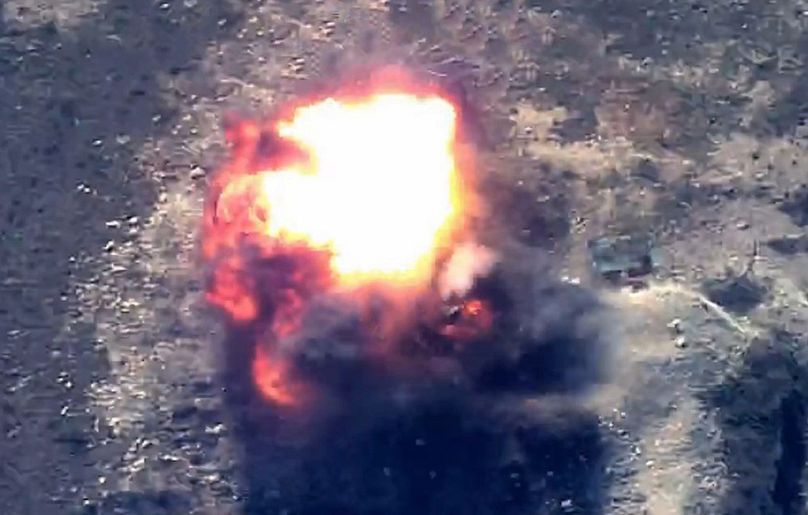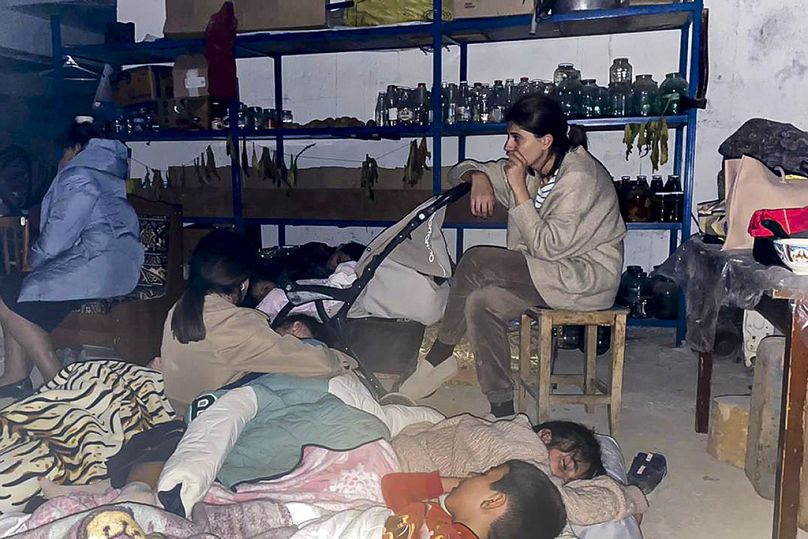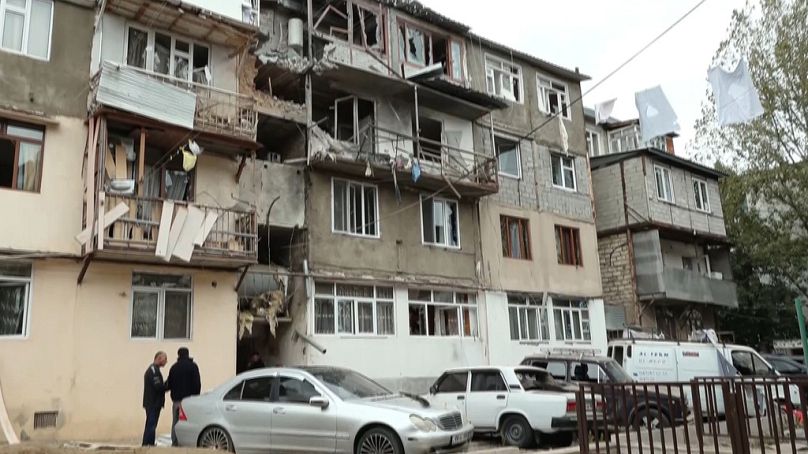Azerbaijan’s launch of reportedly intense artillery firing in the Nagorno-Karabakh region on Tuesday raised fears that another full-scale conflict with Armenia could be underway, less than three years after a war that killed more than 6,000 people.
Nagorno-Karabakh, with a population of about 120,000, is an ethnic Armenian region of Azerbaijan that has been a flashpoint since the collapse of the Soviet Union. The region and sizable surrounding territories came under the control of ethnic Armenian forces backed by the Armenian military at the 1994 end of the separatist war. Azerbaijan regained the territories and parts of Nagorno-Karabakh itself in fighting in 2020.
The latter war ended with an agreement to deploy Russian peacekeepers in the region, but tensions have soared since December when Azerbaijan began blocking the road that connects Nagorno-Karabakh with Armenia proper. The artillery firing that Azerbaijan calls an “anti-terrorist operation” started hours after it said four soldiers and two civilians were killed by landmines that it claimed were planted by Armenian saboteurs.
“It looks like it could be, unfortunately, terrible - war number three, something that people have been fearing but hoping to avoid with diplomacy in the last few weeks and months,” said Thomas de Waal, a regional specialist at the Carnegie Europe foundation.
What is this region?
Mountainous Nagorno-Karabakh, smaller than the U.S. state of Delaware, has significant cultural importance to both Armenians and Azeris. It had a substantial degree of autonomy within Azerbaijan when it was part of the Soviet Union. As the USSR deteriorated, Armenian separatist unrest broke out, later becoming a full-scale war after the Soviet Union collapsed.
Most of the Azeri population was driven out by the end of the fighting in 1994. Then amid the 2020 fighting, around 90,000 ethnic Armenians were displaced, some of them setting their homes ablaze before Azeris could resettle.
The Russian peacekeeping force was tasked with ensuring that the road leading to Armenia, called the Lachin Corridor, would remain open. But it has been mostly blocked since December as Azerbaijan alleged that Armenians were smuggling in weapons and conducting illicit resource extraction. That brought severe food shortages to Nagorno-Karabakh and Armenian allegations that Azerbaijan aimed for genocide by starvation.
What is happening now?
After months of dispute and negotiations, the International Committee of the Red Cross arranged a shipment of about 20 tons of flour into Nagorno-Karabakh this week from Armenia as well as medical supplies via a different road leading from Azerbaijan-held territory.
Nagorno-Karabakh officials had previously resisted aid coming by the latter road, saying it was a strategy for Azerbaijan to absorb the region.
Although the shipments suggested the crisis could be easing slowly, Azerbaijan’s report of military and civilian mine deaths on Tuesday escalated tensions and Azerbaijan then launched the artillery operation.
Russia's role
Armenia has repeatedly criticized Russian peacekeepers for failing to keep the Lachin Corridor open and for disregarding sporadic small clashes along the border.
Although Armenia is a longtime Moscow ally, including hosting a Russian military base, relations have deteriorated notably in the past year. Along with the road dispute, Armenia, this year angered Russia by refusing to allow exercises on its territory by the Moscow-led Collective Treaty Security Organization bloc and by holding joint exercises this month with US troops. In addition, Moscow was offended by Armenia providing humanitarian aid to Ukraine.
Russia’s involvement in ending the 2020 war was a significant accomplishment that boosted its influence in the region. But its esteem has seriously eroded over the past year.
The acclaim it gained could be lost if it doesn’t take stronger measures to open up the road.
Russia doesn't appear eager to step into the new conflict. Commenting on Armenia’s demand for Russian peacekeepers to end the fighting, Russian Foreign Ministry spokeswoman Maria Zakharova said, “What about Yerevan’s recognizing Nagorno-Karabakh as part of Azerbaijan?”
And former Russian President Dmitry Medvedev, resentful of Armenia’s distancing itself from Russia, said of Armenian Prime Minister Nikol Pashinyan, “Guess what fate awaits him.”
Possible consequences
Pashinyan’s assenting to the Russia-brokered agreement to end the 2020 fighting was widely unpopular in Armenia, with opponents accusing him of being a traitor and large protests demanding his resignation.
The new hostilities will likely prompt a new wave of popular dismay. And Pashinyan is aware of the potential power of such protests, having become prime minister himself on the heels of large demonstrations in 2018.














